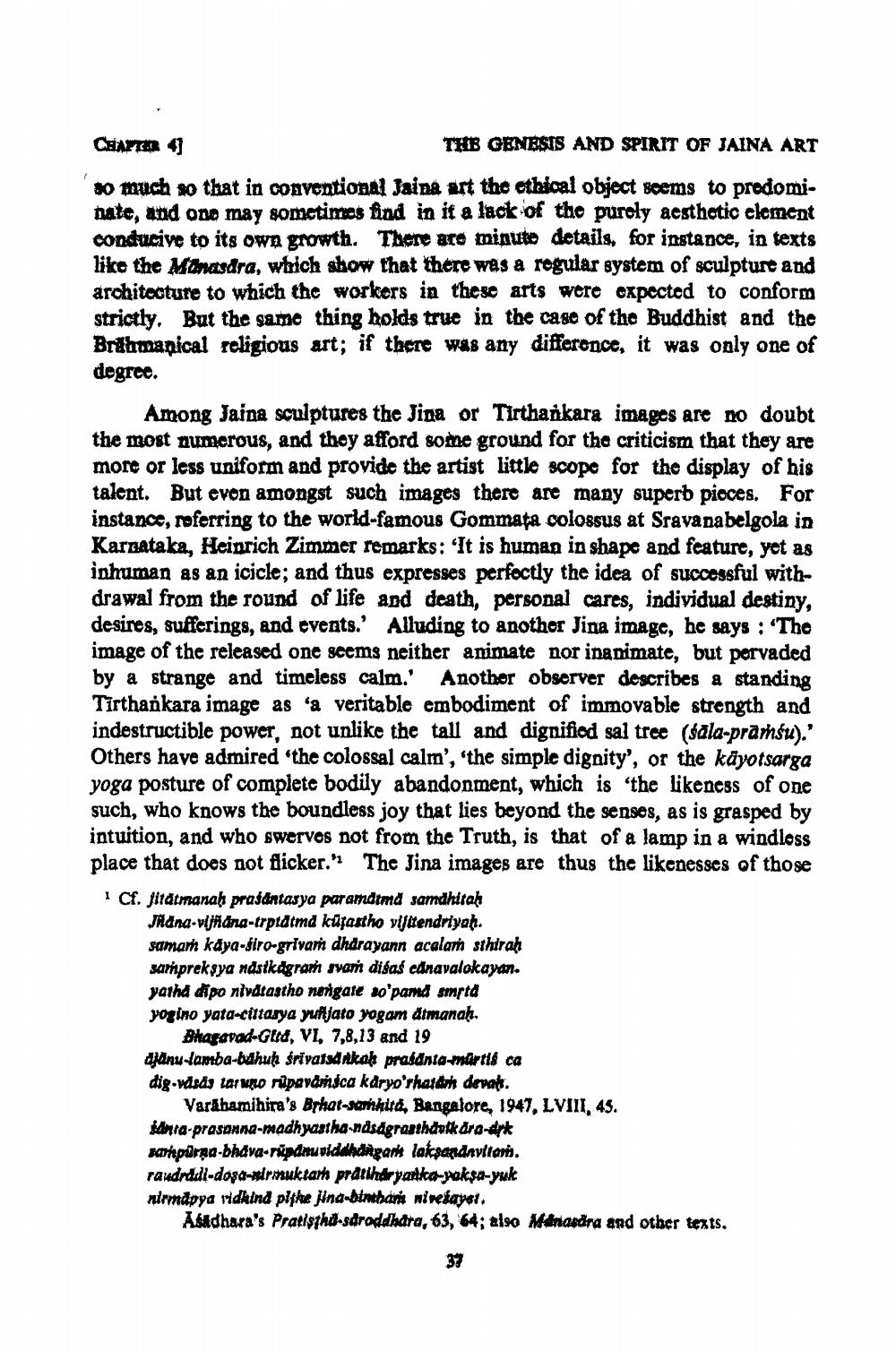________________
CHAPTER 41
THE GENESIS AND SPIRIT OF JAINA ART
so much so that in conventional Jaina art the ethical object seems to predominate, and one may sometimes find in it a lack of the purely aesthetic element conducive to its own growth. There are minute details, for instance, in texts like the Manasdra, which show that there was a regular system of sculpture and architecture to which the workers in these arts were expected to conform strictly. But the same thing holds true in the case of the Buddhist and the Brahmanical religious art; if there was any difference, it was only one of degree.
Among Jaina sculptures the Jina or Tirthankara images are no doubt the most numerous, and they afford some ground for the criticism that they are more or less uniform and provide the artist little scope for the display of his talent. But even amongst such images there are many superb pieces. For instance, referring to the world-famous Gommata colossus at Sravanabelgola in Karnataka, Heinrich Zimmer remarks: 'It is human in shape and feature, yet as inhuman as an icicle; and thus expresses perfectly the idea of successful withdrawal from the round of life and death, personal cares, individual destiny, desires, sufferings, and events.' Alluding to another Jina image, he says: "The image of the released one seems neither animate nor inanimate, but pervaded by a strange and timeless calm.' Another observer describes a standing Tirthankara image as a veritable embodiment of immovable strength and indestructible power, not unlike the tall and dignified sal tree (sala-prāmsu)." Others have admired 'the colossal calm', 'the simple dignity', or the käyotsarga yoga posture of complete bodily abandonment, which is 'the likeness of one such, who knows the boundless joy that lies beyond the senses, as is grasped by intuition, and who swerves not from the Truth, is that of a lamp in a windless place that does not flicker." The Jina images are thus the likenesses of those
1 Cf. jitätmanaḥ prašantasya paramdıma samdhitaḥ Jääna-vijfdna-trpiātmā kūjastho vijitendriyah.
samam kaya-siro-grīvam dhdrayann acalam sthiraḥ sampreksya nasikāgraṁ svaṁ diśaś canavalokayan. yatha dipo nivätastho nengate so'pamā smṛtā yogino yata-citanya yuljato yogam dimanah. Bhagavad-Gitd, VI, 7,8,13 and 19
djānu-lamba-báhuḥ śrīvatsáňkaḥ praśānta-mûrtis ca dig-väsäs taruno rūpavāṁšca kāryo'rhatan devah.
Varahamihira's Brhat-samhita, Bangalore, 1947, LVIII, 45. santa-prasanna-madhyastha-näsägrasthävikära-dṛk
saripürṇa-bhava-rüpdmusiddhängan lakṣandavitam. raudrddi-dosa-nirmuktaṁ prätihäryanka-yaksa-yuk nirmäpya vidkind pitke jina-bimbaris nivešayet.
Asadhara's Pratistha-sdroddhara, 63, 64; also Manasdra and other texts.
37




